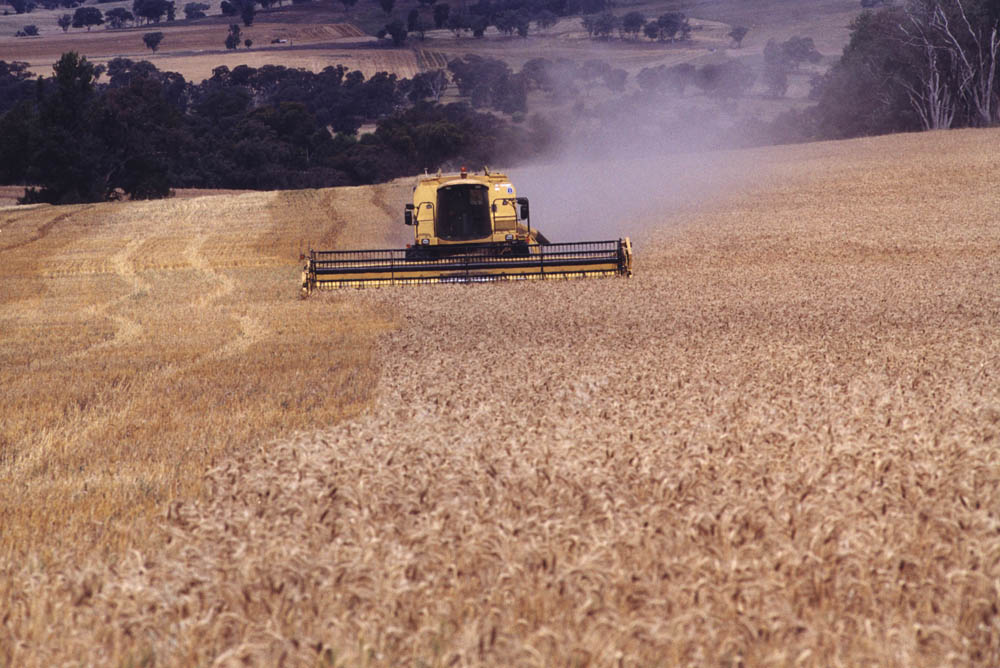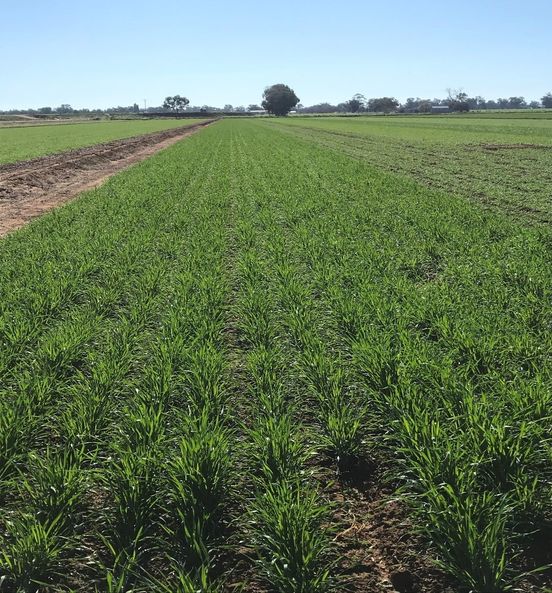- GVP $4.16 billion est. Up 541% yoy.
- Record production of 13.1 million tonnes.
- Wheat exports rebounded strongly, valued at $1.42 billion.
Production
Wheat Production & Yield
- Production 000 tonnes
- 10 Year Moving Avg Production 000 tonnes
- Yield tonnes/ha
As the season progressed some regions began to experience below average rainfall, particularly in the south and south western cropping regions. Due to the strong early start to the season, crops were partly able to compensate with stored moisture reserves over the cooler months. Northern parts of the cropping belt received timely rainfall to finish crops, and managed to avoid heavier rainfall than some of the southern cropping districts experienced towards the end of the season. Some southern regions were subject to lower yields and pre harvest quality downgrades, although this was offset by record average yields and ultimately production of 13.1 million tonnes. This represents a 25% increase on NSW previous record year of 2010-11, and the largest crop of all state jurisdictions on record. 4
In contrast with the recent drought impacted wheat crops, the crop on the northern half of NSW was generally higher yielding and generated the larger production volumes than the southern parts of NSW.
Price
Since the drought began and through the more conducive recent local growing conditions, US wheat futures have continued to rise steadily to reach levels around $300/tonne or greater for most of the Australian wheat marketing period. This has supported local prices at above average levels and helped to generate increased business returns over the large wheat crop. Global prices are being supported by increased demand stemming from the feed grain sector and across a range of cereal commodities including Maize, despite record global production. 207 195
The strong domestic prices are also impressive considering a firmer exchange rate for the fiscal year. The Australian dollar increased to sit above 70 US cents for the entire year, averaging 74.92 US cents for the second half of the year, thereby eroding wheat export prices relative to last year. 178
Wheat Futures Versus Domestic Port Prices
- H2 Wheat (Del. Sydney)
- CME Futures (#1 Front Month)
- Approx. Drought Duration
Trade
NSW Wheat Export Markets
- 2020-21 Exports
- 10 Year Avg. Exports
The NSW wheat export program was much more concentrated in the states top four markets of China, Vietnam, Italy and Indonesia, than compared to the 10-year average levels. All four of these markets were worth in excess of $150 million, while there was also concentration of exports in medium size markets at the expense of traditionally smaller markets compared to the 10-year average.
Global wheat imports to China grew by 97% year on year due to increasing Chinese domestic feed grain prices, including for Maize which started to climb around April 2020. 207 121 Chinese domestic maize was trading at a price premium of $70/tonne to imported maize in September 2020, leading to increasing import prices for both maize and wheat as a feed grain substitute. 121 Feed grain demand to support the pork herd rebuilding effort has supported the market, while the Chinese government are likely also using the opportunity to replenish government reserves with imported grain.
Macroeconomic Conditions
China continued to hold a vast share of global ending stocks, equivalent to 49% of global ending stocks. The volume of Chinese wheat stocks declined by 39%, while total Chinese consumption rose by 19% which is mostly due to a significant increase in feed grain demand to support the pork herd rebuild. 207 Chinese demand for wheat reflects an overall increase in demand for feed grains, primarily Maize, which is resulting in grain substitution and supporting global wheat prices. 195
Australian farmers have also benefitted from newly government imposed export taxes on Russian producers aimed at curbing Russian food price inflation. Old crop was charged a €50/tonne fixed tax, while a new floating export tax came into effect as of June to the value of 70% of the difference between the market benchmark price and the base government price of US $200/tonne. The result has been less competitive Russian wheat exports benefitting the very large Australian wheat export program. 122
Global Wheat Production, Consumption and Ending Stocks
- China Ending Stocks
- ROW Ending Stocks
- Domestic Consumption
- Production
Outlook

Australian production is forecast to decline marginally by 2% to 32.6 million tonnes, as Eastern Australian conditions at planting time resulted in less area being planted compared to the previous season. NSW production is currently pegged at 11.1 million tonnes, the second largest on record behind 2020-21, although growing season rainfall has been above average for most of the NSW cropping zone, with potential upside to yield forecasts likely leading into harvest provided soft conditions are sustained. 4




